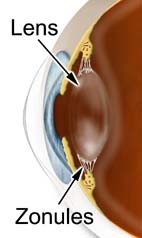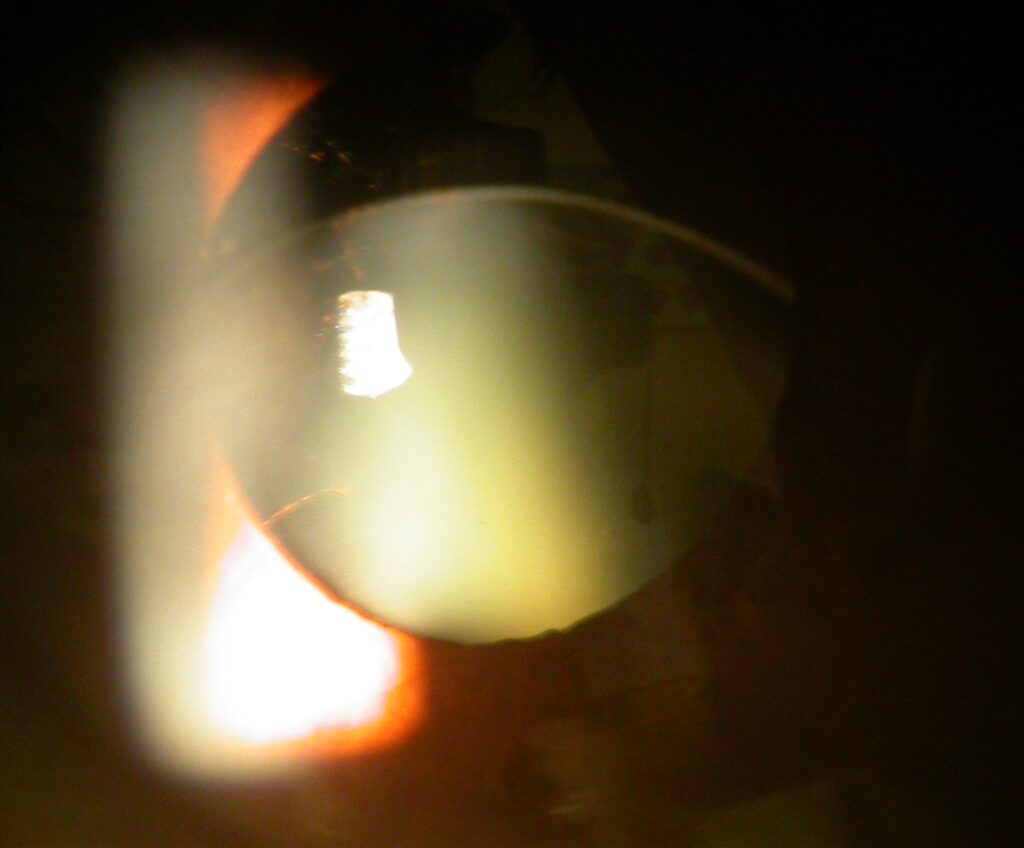- Complicated Cataract (weak zonules, dislocated lens)
The natural lens of the eye is contained within an elastic ‘capsular bag’. This bag is suspended within the eye by a series of ‘guy ropes’ around the outside of the lens called zonules. This is rather like a trampoline being suspended by springs all around its edge, holding the trampoline taut and central.

High magnification view through an iris showing the curcular pupil, with a decentered / dislocated cataractous lens. This is due to weak zonules.
Similarly, 2% of all cataract operations have a complication known as ‘posterior capsule rupture’. This is where the capsular bag that holds the lens in position splits during surgery, allowing the cataract or lens to potentially fall into the vitreous gel of the eye, or allowing the gel to come forward. Again, this can only be repaired by a retinal surgeon with a vitrectomy procedure.
In some individuals these zonules can be naturally weak, especially if the cataract is very dense. In others these zonules may have been damaged by trauma, previous surgery, or a condition known as pseudoexfoliation. In these circumstances the lens or cataract of the eye may dislocate spontaneously, without any injury, or even dislocate unexpectedly during cataract surgery. If this occurs then the lens of the eye, instead of being suspended near the front of the eye, may fall into the vitreous gel at the back of the eye, or alternatively, let the vitreous gel at the back of the eye come forwards into the front of the eye. This type of dislocated lens or vitreous migration can not be repaired with conventional cataract surgery. This requires a retinal surgeon to remove the vitreous gel and the lens / cataract using completely different equipment to that used during cataract surgery. This procedure is known as a ‘vitrectomy’.

